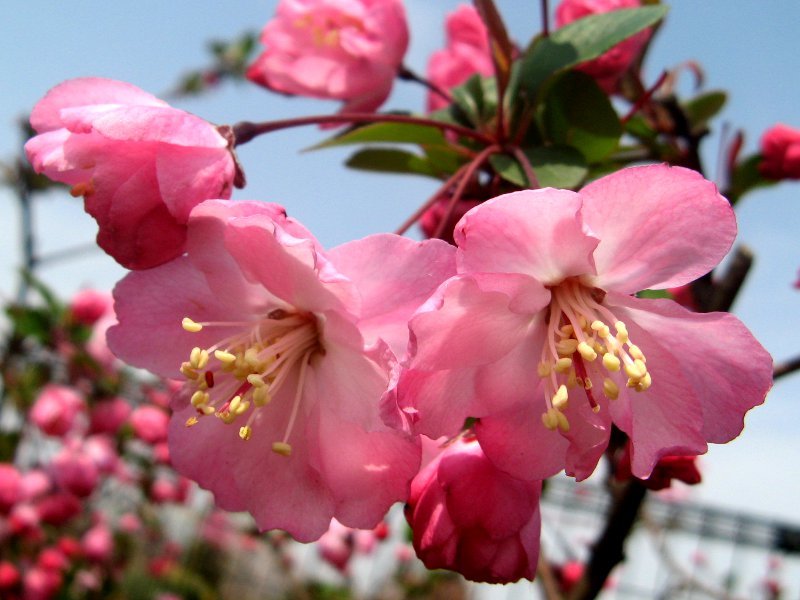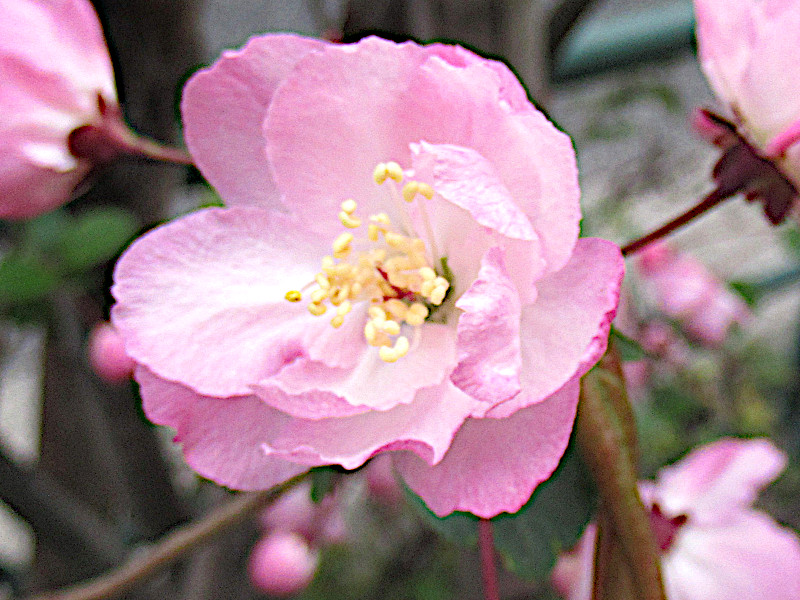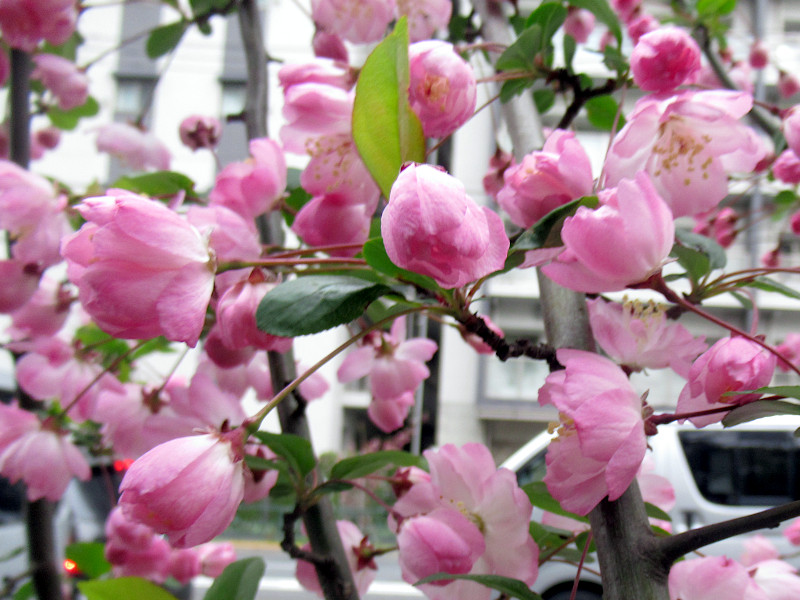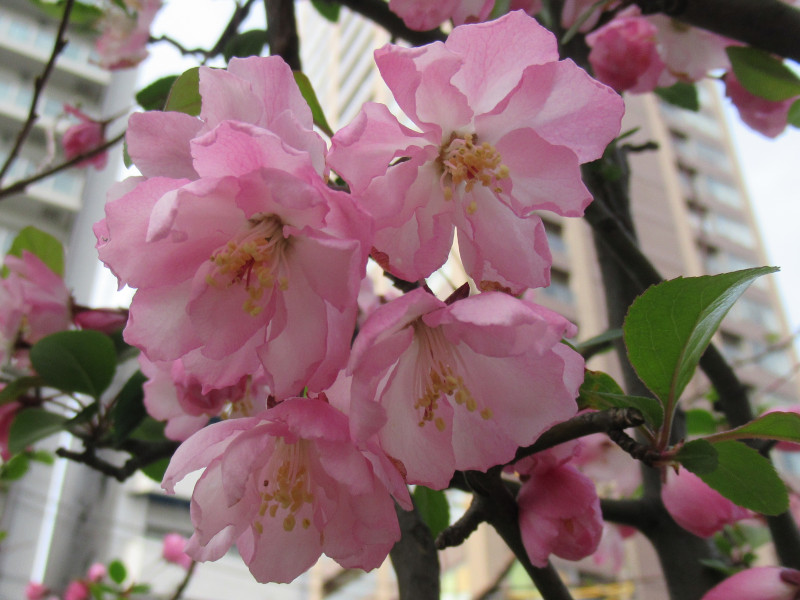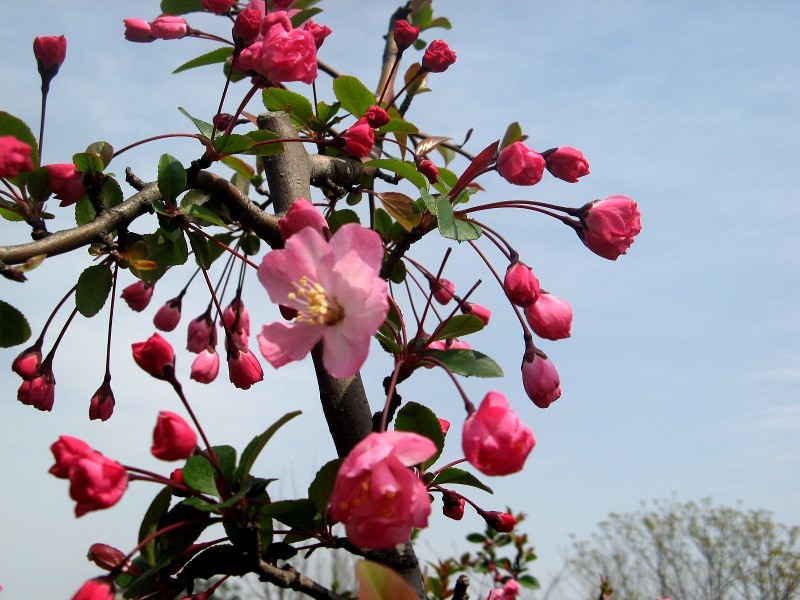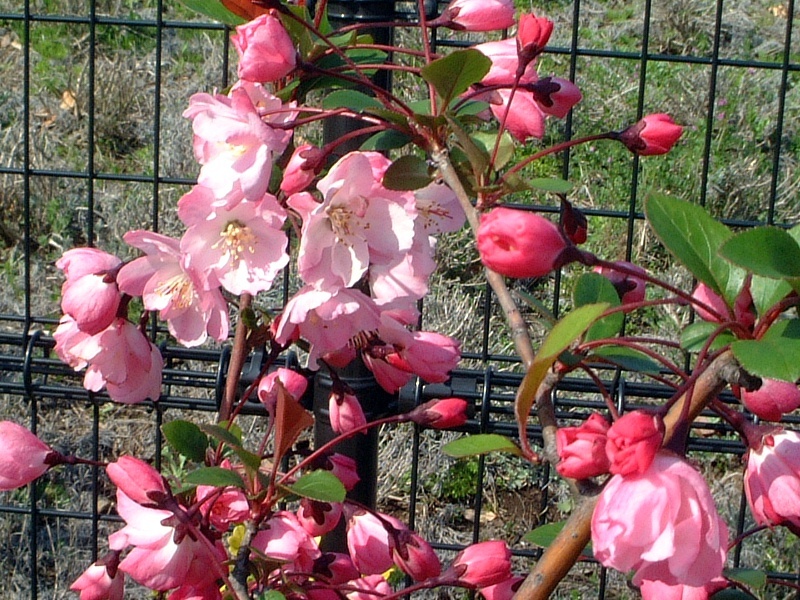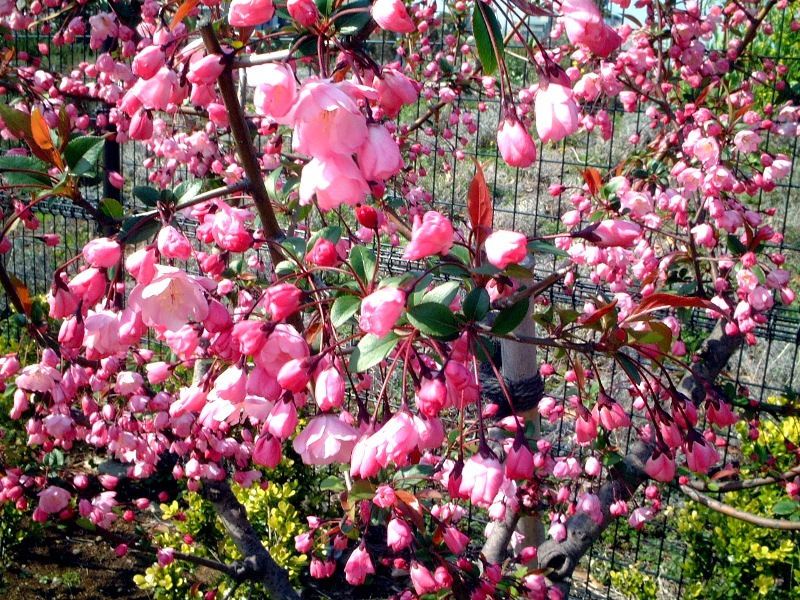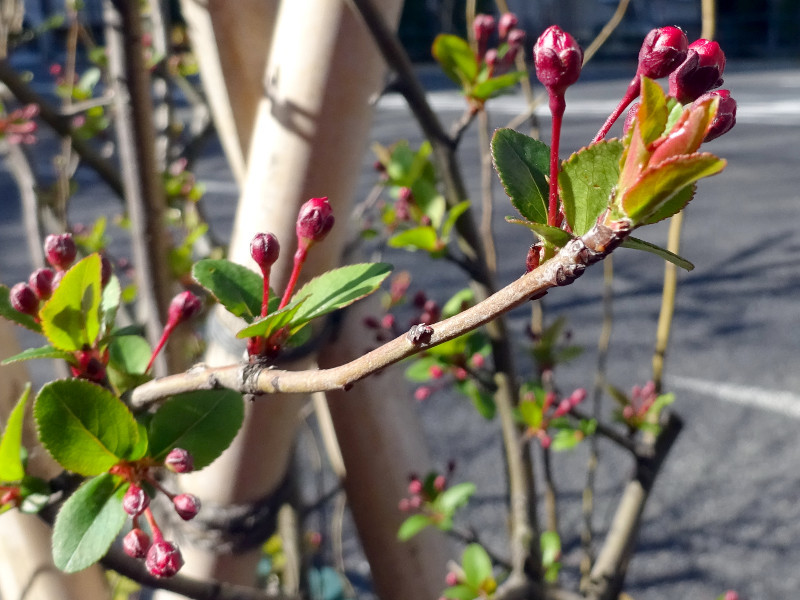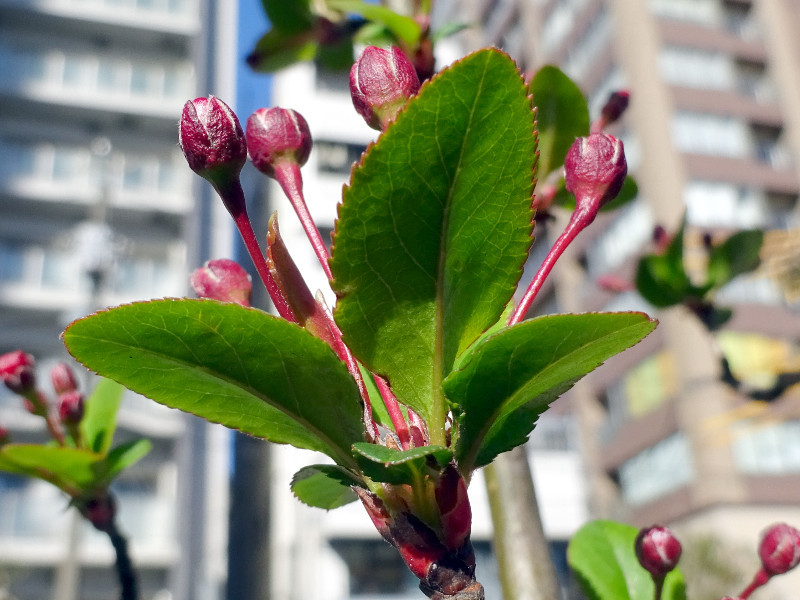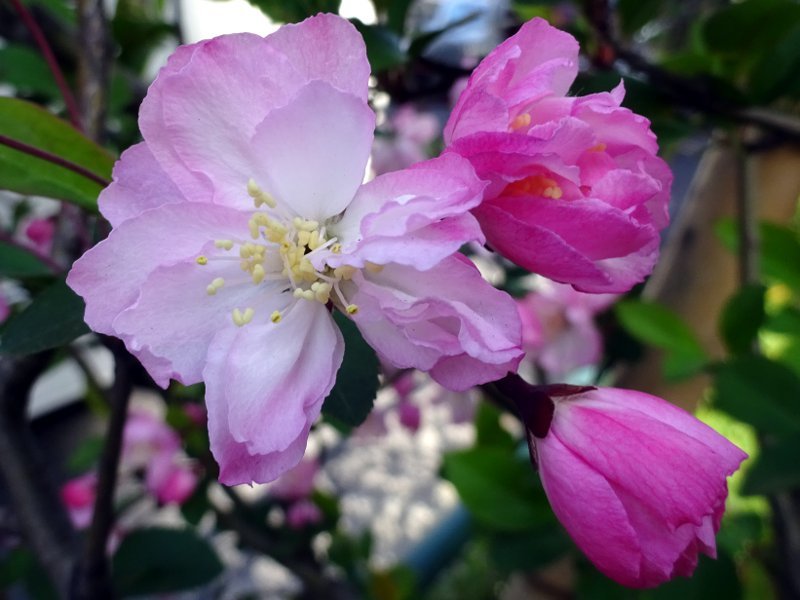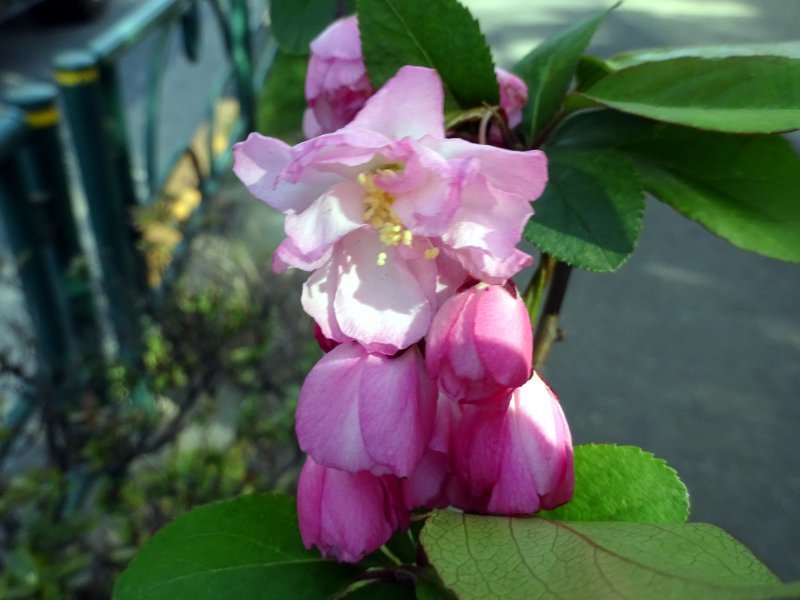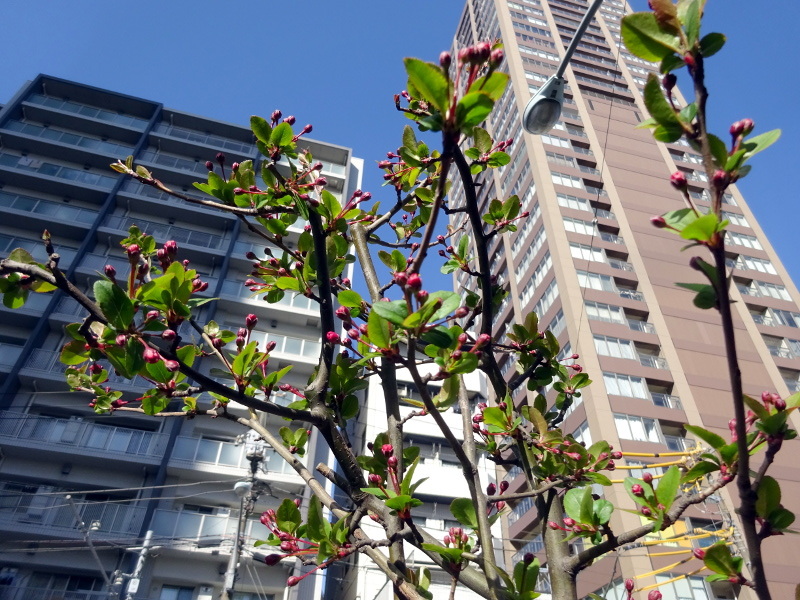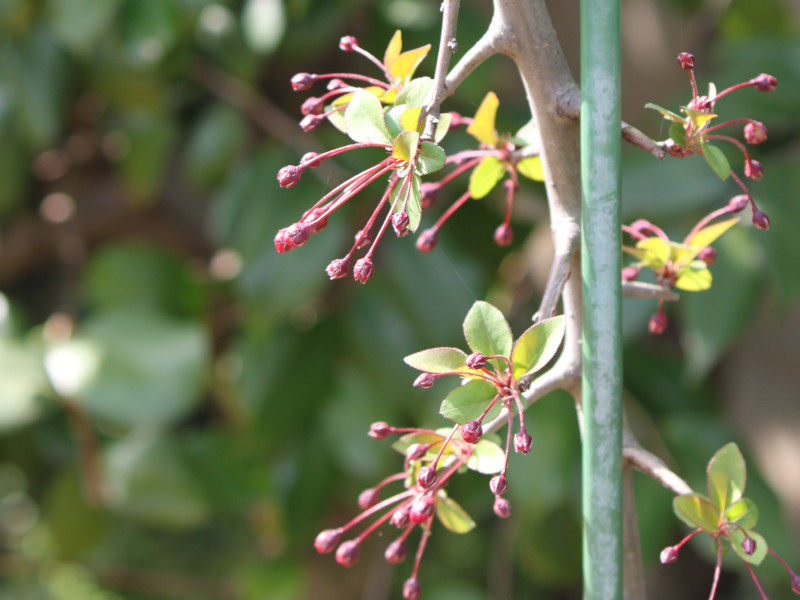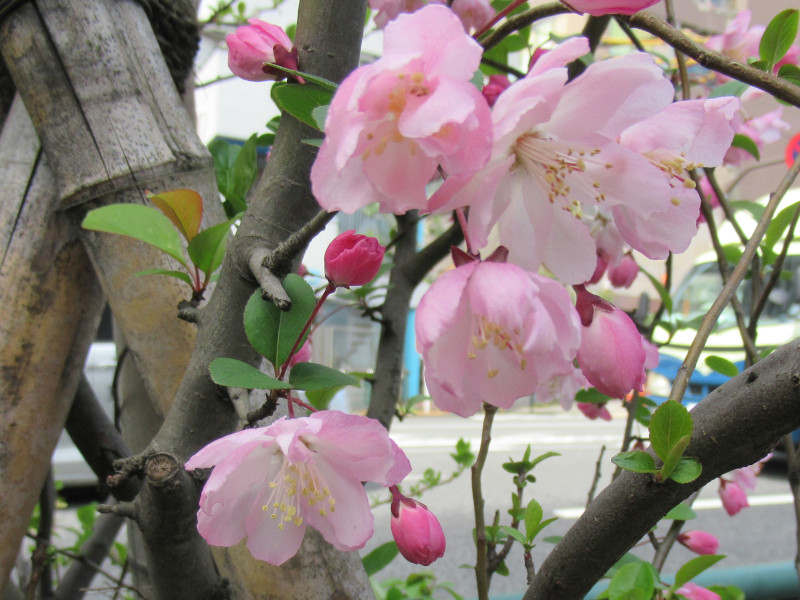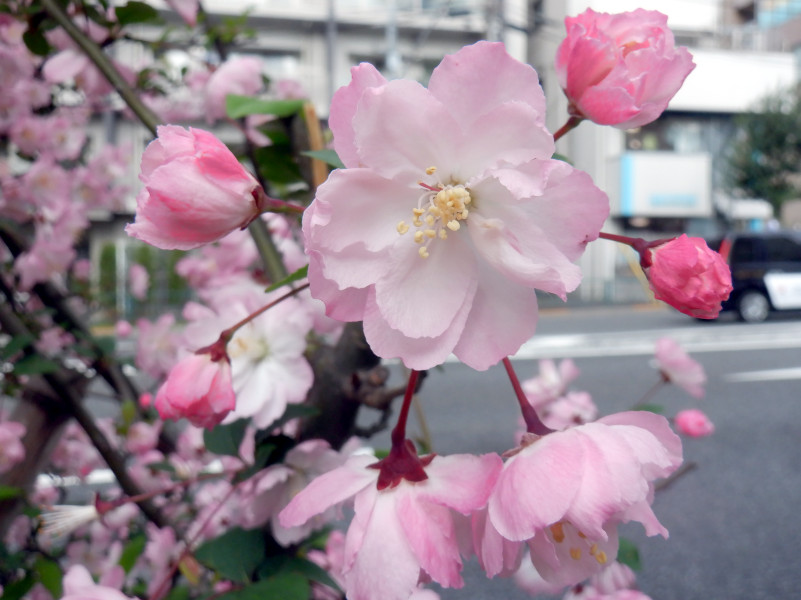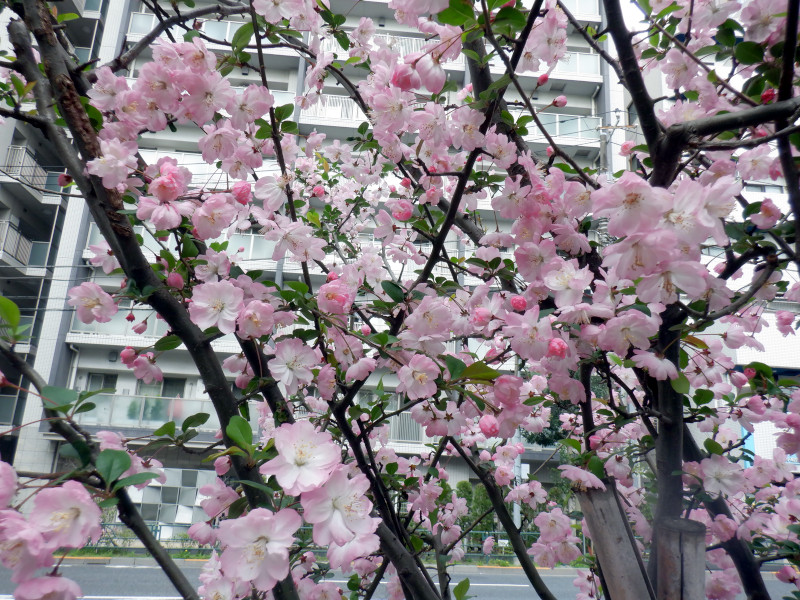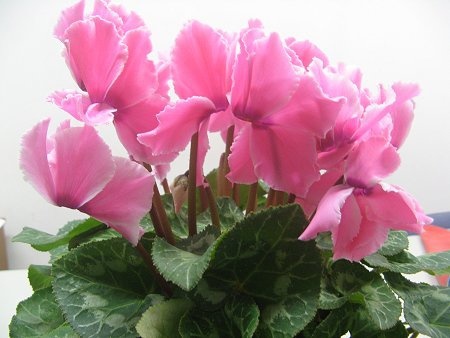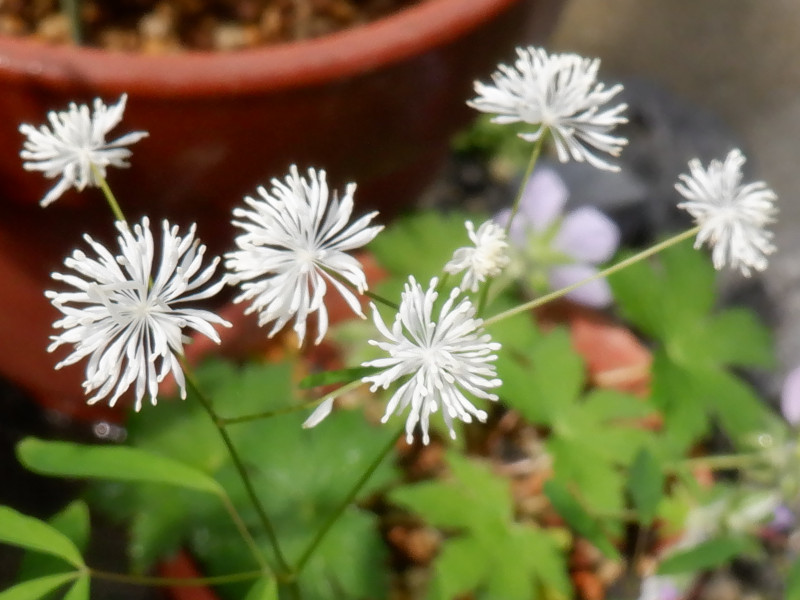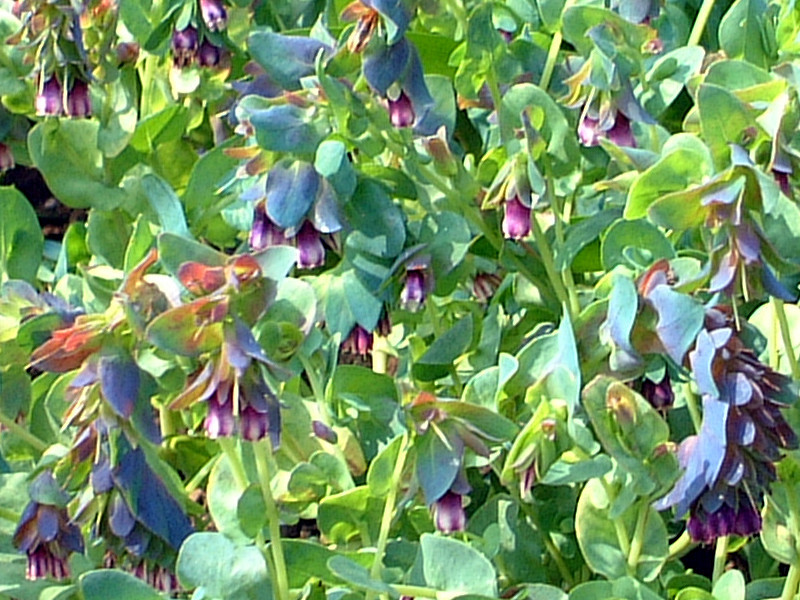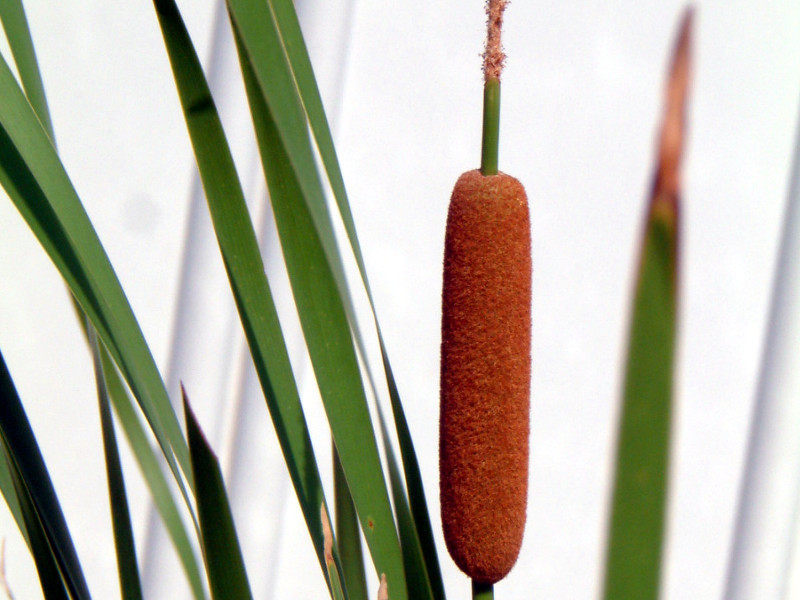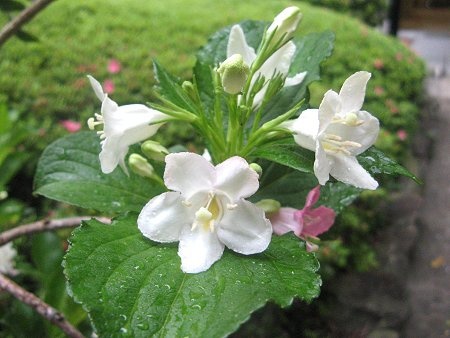Hall crabapple
- Flower nameHall crabapple
- Scientific nameMalus halliana
- Aliasカイドウ, 花海棠, Hall's crabapple, スイシカイドウ, Hall crabapple, 海棠
- Place of originChina
- Place of floweringGarden, Park, Potted flower
- Flowering seasonApril, May
What is Hall crabapple
In spring, the roadside trees, Hall crabapple,or Hanakai-do, are among the first to bloom. The pretty pink buds swell up and every corner of the trees seems to be preparing to bloom all at once. After blooming, the flowers quickly fall off. There are also white flowers, but I have never seen them. It is a member of the same family as the apple, so it produces small red berries after flowering.
The Hall crabapple, Malus halliana or Hana-kaido (scientific name: Malus halliana) is a cold-resistant, deciduous, broad-leaved, medium-tall tree of the apple family, Rosaceae, native to China. In China, it is called "垂丝丝海棠," and was introduced to Japan in the Edo period (1603-1868) as a medicine for regulating the meridian and soothing the circulation of the blood. It is also known as "Kaidou" (Chinese name: Kaidou), "Sui shi kaidou" (Chinese name: 垂糸海棠), and "Hall's crabapple" (English name: Hall crabapple). It is distributed from Hokkaido to Kyushu. The height of the tree is 5 to 8 meters. The leaves are ovate, single, and 3 to 8 cm long. The leaf margins are serrated, and they are attached in alternate arrangements. In April to May, it produces a scattered inflorescence 3 to 6 cm long that emerges from the tip of the flower stalk, and 5 to 6 peach-colored flowers 3.5 to 5 cm in diameter hang down from the tips of its short branches. The fruits are edible, but often do not bear fruit.
Origin of flower name
The genus name "Malus" means "apple" in Latin, and the species name "Halliana" is a dedication to Dr. George Rogers Hall (1820-1899), an American physician and plant enthusiast who lived in Shanghai, China in the 10th century and later co-owned a trading post on Dejima Island in Nagasaki, Japan. The Japanese name "Hanakaito" means "flower arbor" in Chinese.
The Japanese name "Hana-Kaidang" was derived from the Chinese name "Kaidang," a plant that had already been introduced to Japan in the Muromachi period (1336-1573), and was named "Hana + Kaidang" because of its beautiful flowers. The traditional name "Kaidou" came to be called "Mikkaidou (scientific name: Malus micromalus)" because the fruits of the plant grow well.
Although the two species are similar, they can be distinguished from each other by the following points. The flower of Hana-Kaidou has leaves after the flower, the flower color is deep pink, there are single-petaled and double-petaled flowers, and the flower blooms downward. The flower and leaf appear at the same time, the color of the flower is light pink, the flower is single-petaled, and the flower blooms upward.
Language of flowers
"sleeping beauty," "bewitching," "mild."
The language of flowers comes from the fact that Emperor Xuanzong, upon seeing Yang Guifei looking sleepy, compared Yang Guifei to the flower Tang, saying that Tang seemed to be sleep deprived.
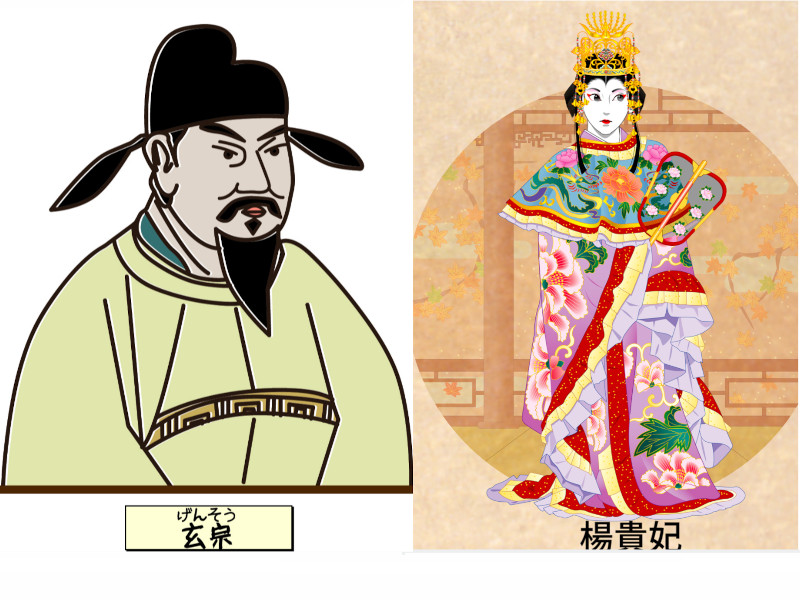
Emperor Xuanzong and Yang Kwei-hui
Common name: The Hall crabapple, Malus halliana or Hana-kaido, scientific name: Malus halliana, also known as Kaidou, Suishikaitou, Hall's crabapple, Hall crabapple, Place of Origin: China, Habitat Distribution: Hokkaido - Kyushu, Life Form: Deciduous, cold hardy, broad-leaved, medium height tree, Height: 5-8 m, Single leaf, Leaf Form: ovate, Leaf Height: 3-8 cm, Leaf margin: single serrate, Inflorescence: alternate, Separate petals, Flowering Period: April - May, Inflorescence Form: panicles, Petal Number: 5-10, Flower Color: pink/white, Flower Diameter: 3.5 - 5 cm, Flowering Flowering: 5-6 drooping flowers on short branch tips; petiole length: 3-6 cm; fruiting season: September-October; fruit diameter: 1 cm; fruit color: red; fruit shape: inverted ovate.
